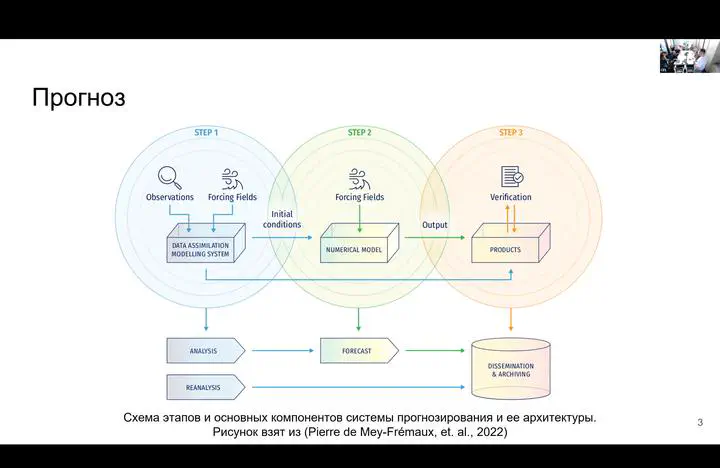Nikita Turko: neural networks help optimize ocean data collection points

At the seminar, based on the PhD thesis titled “Sensitivity of Ocean State Forecast Accuracy to the Localization of Assimilated Observational Data,” innovative methods for the optimal placement of measuring instruments were discussed. The focus was on two novel approaches: the Mutual Information Maximization method and the Concrete Autoencoder with LSGAN. The first approach involves strategically placing sensors in locations that provide information about the largest possible area of the ocean, achieved through analysis of spatial correlations in the physical field. The second approach employs surrogate machine learning models to optimize sensor placement and reconstruct the physical field, using a Least Squares Generative Adversarial Network for training. These methods aim to improve forecast accuracy and reduce computational costs in oceanographic modeling.